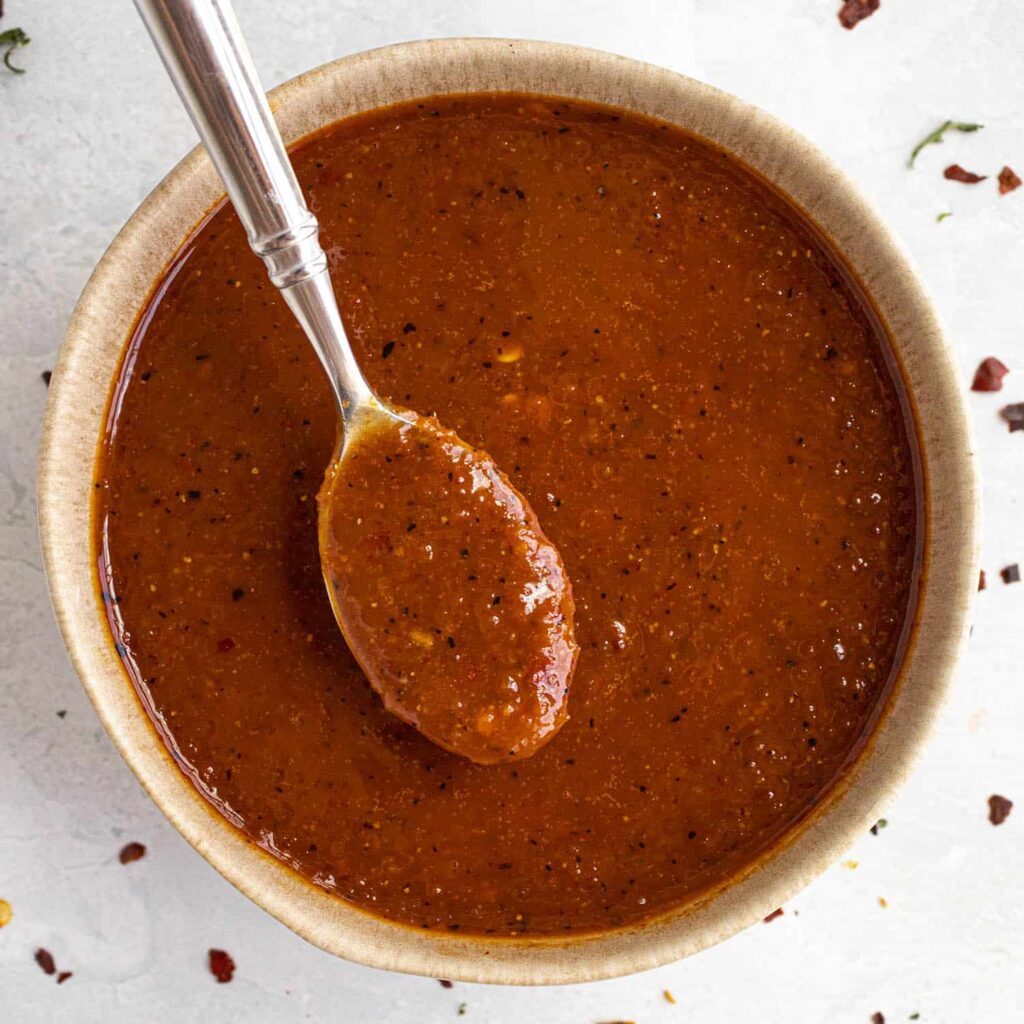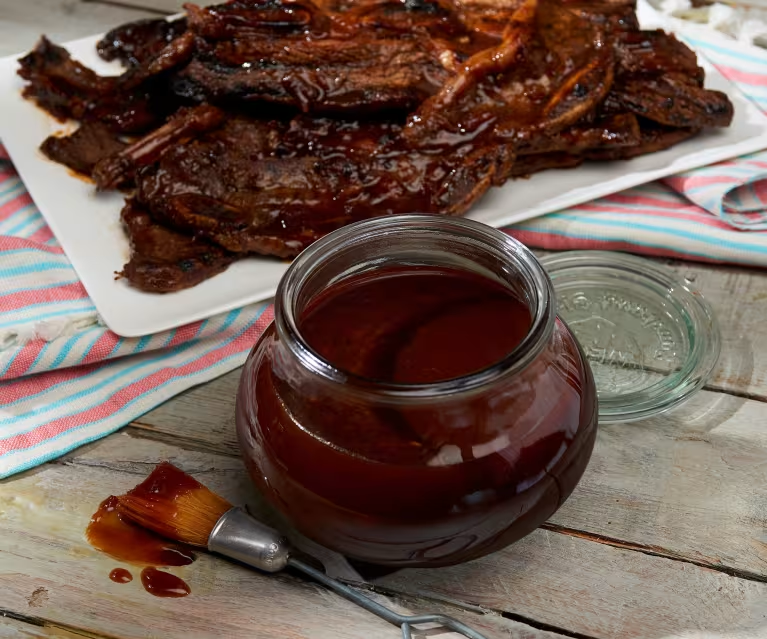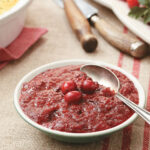Embark on a journey of culinary delight as we delve into the tantalizing realm of Asian BBQ sauce. This iconic condiment serves as the bedrock for a spectrum of flavors, boasting a fusion of sweetness, savory notes, and a hint of tanginess that elevates any dish it graces. Let’s uncover the roots, ingredients, regional variations, and much more in this flavorful exploration.
The Origin and Cultural Significance of Asian BBQ Sauce
The roots of Asian BBQ sauce are deeply embedded in the vibrant tapestry of Asian culinary traditions, tracing back through centuries of regional cooking practices and cultural rituals. This iconic condiment isn’t just a mere flavor enhancer but holds significant cultural and historical importance across various Asian countries.
1, China
In China, the origins of Asian BBQ sauce can be traced to ancient dynasties, where soy sauce, a fundamental component of the sauce, was first developed. Chinese culinary history showcases the use of rich, savory sauces dating back to the Zhou dynasty. These sauces, often based on soy or fermented bean pastes, laid the foundation for the development of the iconic Hoisin and Black Bean sauces, both integral to Asian BBQ sauces today.
2, Japan
Japanese culinary traditions, with their emphasis on delicate flavors, also have contributed to the Asian BBQ sauce landscape. Teriyaki, a well-known and widely enjoyed sauce both in Japan and internationally, presents a harmony of soy, mirin, and sugar, used primarily in grilling. The marriage of sweet and savory in teriyaki sauce exemplifies the Japanese approach to culinary balance.
3, Korea
Korean cuisine showcases its bold and fiery Gochujang sauce, integral to Korean BBQ. The smoky, piquant flavor profile of Gochujang, with its base of fermented soybeans, chili peppers, and glutinous rice, illustrates the robust and diverse range of flavors found in Asian BBQ sauces.
4, Thailand
Thailand’s culinary traditions feature an array of flavors, and the tangy, sweet, and slightly sour tamarind-based sauces used in Thai BBQ dishes add a unique touch to the global spectrum of Asian BBQ sauces. These sauces often blend fish sauce, tamarind, palm sugar, and a mix of aromatic herbs to create a delightful balance of sweet, sour, and savory notes.
Beyond its historical origins, Asian BBQ sauce reflects cultural practices and rituals. In many Asian countries, grilling and communal cooking are more than mere culinary activities—they are social events. Whether it’s the Japanese yakitori stalls, Chinese street vendors grilling skewers, or Korean BBQ restaurants, these sauces serve as the heart of these communal gatherings, symbolizing togetherness, celebration, and shared experiences.
Furthermore, the development and evolution of these sauces are deeply intertwined with indigenous ingredients, culinary techniques, and cultural practices. Families often pass down secret recipes and methods for creating these sauces, preserving a legacy of taste that is both nostalgic and deeply rooted in cultural heritage.

Key Ingredients that Define Asian BBQ Sauce
The allure and distinctive flavors of Asian BBQ sauce lie in a harmonious blend of key ingredients carefully selected to create a balanced and complex taste profile. Each ingredient contributes its own unique essence, resulting in the signature characteristics that define Asian BBQ sauce.
1, Soy Sauce
Soy sauce stands as the cornerstone of Asian BBQ sauce. Originating from China over 2,000 years ago, soy sauce is a fermented liquid made from soybeans, wheat, salt, and a fermenting agent like koji mold. It provides the umami depth, saltiness, and rich savory notes that form the base of the sauce.
2, Garlic and Ginger
Freshly minced garlic and grated ginger infuse the sauce with aromatic and pungent elements. These ingredients add layers of complexity, depth, and a slightly spicy undertone that complements the sauce’s overall flavor.
3, Sweeteners
Brown sugar or honey adds a touch of sweetness, balancing the saltiness of the soy sauce. This sweetness not only rounds out the flavors but also contributes to the caramelization process when used as a glaze during grilling.
4, Sesame Oil
Sesame oil, often used in small quantities, imparts a distinct nutty and toasty flavor. It elevates the sauce with its rich, aromatic essence, contributing to the overall depth of the sauce.
5, Chili Paste or Sriracha (Optional)
For those seeking a hint of spiciness, chili paste or the popular Sriracha sauce can be added to provide a kick of heat. This addition varies depending on personal taste preferences and can range from a subtle warmth to a fiery intensity.
6, Cornstarch (Optional)
Cornstarch is used to thicken the sauce. When combined with water and added to the simmering mixture, it creates a thicker, more luscious consistency, allowing the sauce to adhere better to grilled meats or other dishes.
The beauty of Asian BBQ sauce lies in the careful balance of these ingredients. The combination creates a multi-dimensional taste profile—rich from the soy sauce, savory from the garlic and ginger, sweet from the sugar or honey, nutty from the sesame oil, and a potential kick of heat from the optional spicy elements. The precise ratios and adjustments of these components are key to achieving the desired flavor that can vary from region to region and from family recipe to family recipe.
Homemade Asian BBQ Sauce Recipes
Creating your own Asian BBQ sauce at home is a delightful and rewarding experience. Here are several recipes that cater to different flavor profiles, allowing you to craft a sauce tailored to your taste preferences

Basic Asian BBQ Sauce
Ingredients:
1/2 cup soy sauce
1/4 cup brown sugar or honey
2 tablespoons rice vinegar or apple cider vinegar
2 cloves garlic, minced
1 tablespoon grated fresh ginger
1 tablespoon sesame oil
Instructions:
In a saucepan, combine soy sauce, brown sugar or honey, vinegar, minced garlic, grated ginger, and sesame oil.
Heat the mixture over medium heat, bringing it to a gentle simmer, and stir until the sugar dissolves.
Simmer for a few minutes until the sauce slightly thickens. Adjust the sweetness or tanginess according to your preference.

Spicy Asian BBQ Sauce
Ingredients (in addition to the basic recipe):
1 tablespoon chili paste or sriracha
Instructions:
Follow the steps for the basic sauce recipe.
Add the chili paste or sriracha to the mixture, adjusting the amount based on your desired level of spiciness. Simmer to combine the flavors.

Hoisin-Style Asian BBQ Sauce
Ingredients (in addition to the basic recipe):
2 tablespoons hoisin sauce
1 tablespoon oyster sauce
1 tablespoon honey
Instructions:
Start with the basic sauce recipe.
Incorporate the hoisin sauce, oyster sauce, and honey to the mixture. Stir and simmer until well combined, adjusting sweetness if needed.

Tamarind-Glazed Asian BBQ Sauce
Ingredients (in addition to the basic recipe):
2 tablespoons tamarind paste
1 tablespoon fish sauce
2 tablespoons palm sugar or brown sugar
Instructions:
Prepare the basic sauce following the initial steps.
Add the tamarind paste, fish sauce, and palm or brown sugar, blending the ingredients thoroughly. Simmer to reach the desired thickness and adjust the sweet-sour balance.
The Health Aspect: Nutritional Content and Considerations
Understanding the nutritional components and making mindful considerations when preparing Asian BBQ sauce is crucial in creating a balance between taste and health. While these sauces infuse delightful flavors, they can contain certain ingredients that might raise concerns about their nutritional content.
1, Sodium Content
Soy sauce, a primary component of Asian BBQ sauce, is high in sodium. For individuals monitoring their sodium intake, opting for low-sodium soy sauce can be an alternative to lessen the salt content without compromising the taste. Moderation in the use of soy sauce can also help manage sodium intake.
2, Sugar and Sweeteners:
Sweeteners like brown sugar or honey contribute to the pleasant sweetness of the sauce. However, excessive sugar intake can be a concern. Consider using less sugar or opting for natural alternatives like agave nectar, maple syrup, or stevia to reduce the overall sugar content while maintaining the desired level of sweetness.
3, Caloric Content:
Asian BBQ sauces can contribute to the overall caloric intake of a meal. Being mindful of portion sizes and using the sauce in moderation can help manage calorie consumption, especially for those watching their weight.
4, Healthy Modifications:
One way to make Asian BBQ sauce healthier is by incorporating healthier alternatives to traditional ingredients. For instance, substituting refined sugar with natural sweeteners, using reduced-sodium soy sauce, and opting for healthier oils like olive oil can improve the overall nutritional profile of the sauce.
5, Balanced Use and Moderation:
While the sauce adds immense flavor to dishes, its nutritional considerations call for balanced use. Incorporating the sauce as part of a well-rounded, diverse diet and pairing it with healthier options like grilled vegetables or lean proteins can help strike a balance between taste and health.
Additionally, being conscious of the frequency and quantity with which the sauce is used in meals is a practical approach to managing the nutritional impact. Embracing moderation while still enjoying the flavors ensures a harmonious balance between savoring delightful cuisine and making healthier choices.
Culinary Endorsement: Embracing the Flavors of Asian BBQ Sauce
Revel in the diversity and versatility of Asian BBQ sauce, as it transcends boundaries and enhances meals with its exquisite taste profile. Whether used as a marinade, a glaze, or a dipping sauce, this condiment offers a world of culinary opportunities to explore.
FAQ Section
Q1: Can I make Asian BBQ sauce less spicy?
Yes, to reduce spiciness, consider adjusting the amount of chili paste, sriracha, or other spicy elements in the recipe.
Q2: What makes Asian BBQ sauce different from traditional BBQ sauce?
Asian BBQ sauce typically contains ingredients like soy sauce, sesame oil, ginger, and other Asian-inspired flavors, providing a different taste profile compared to traditional BBQ sauces.
Q3: Is Asian BBQ sauce suitable for vegetarians or vegans?
Yes, it can be adapted to suit vegetarian or vegan diets by choosing alternative ingredients such as mushroom-based soy sauce and eliminating non-vegan elements like honey (substituting with agave or maple syrup).




























